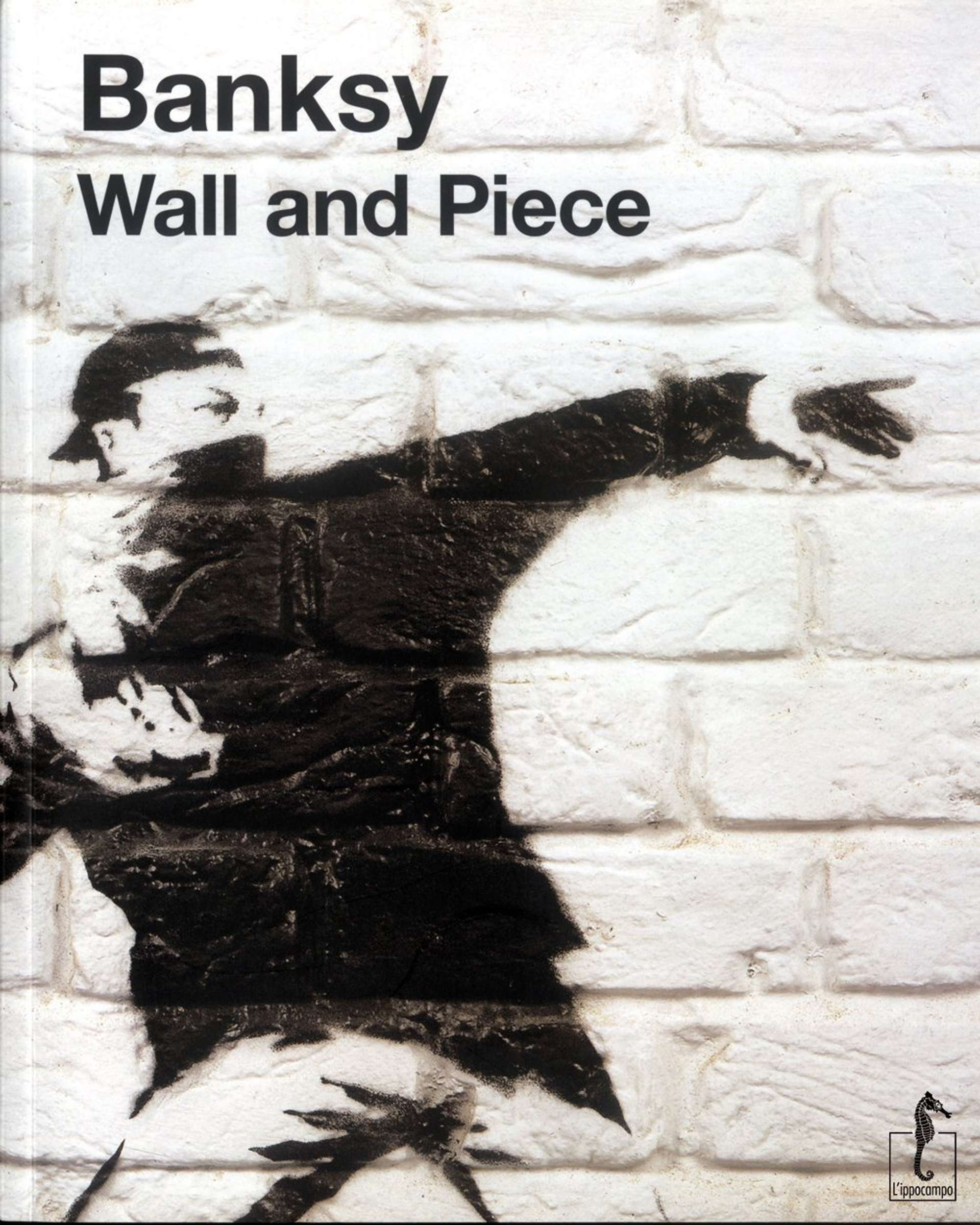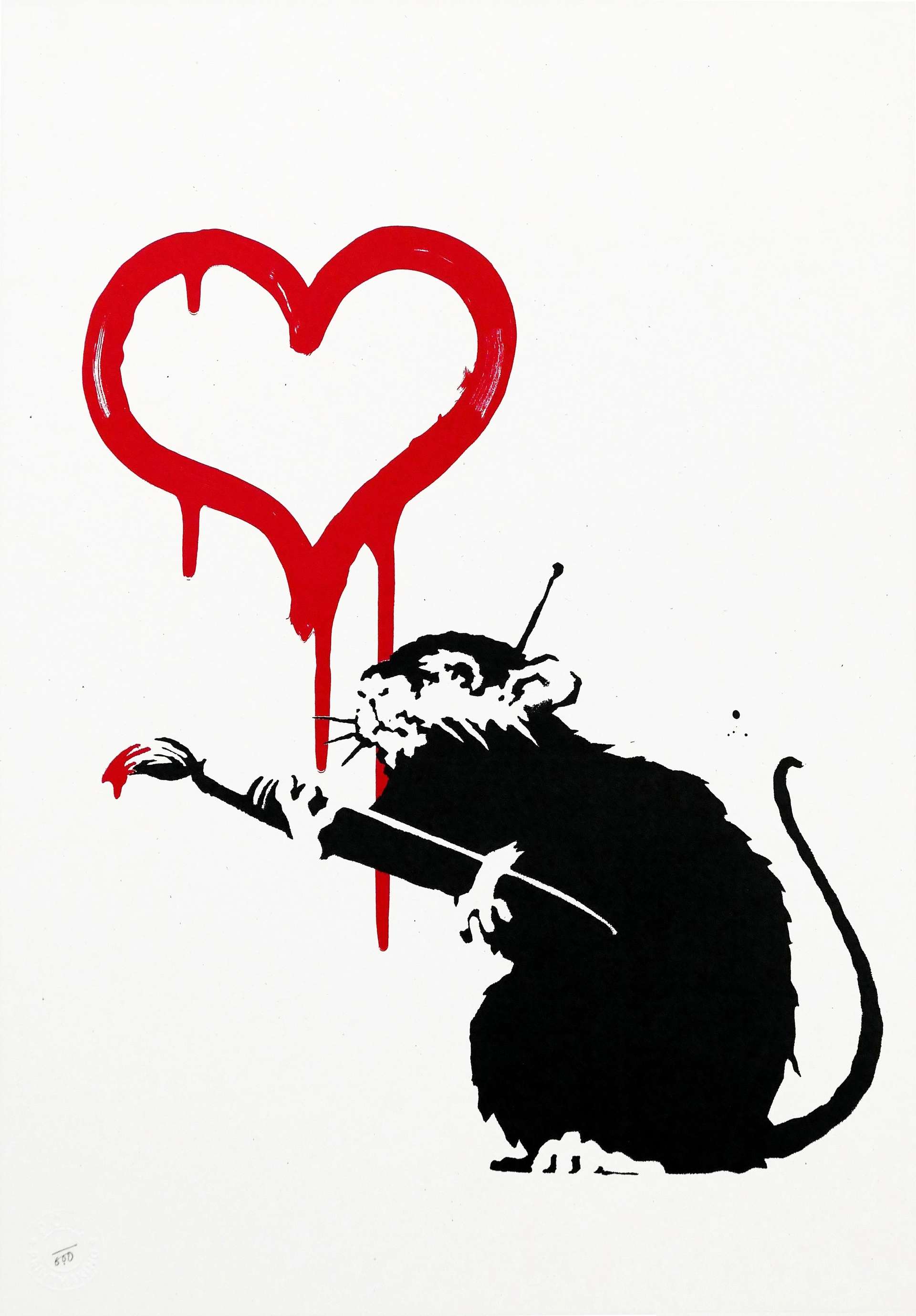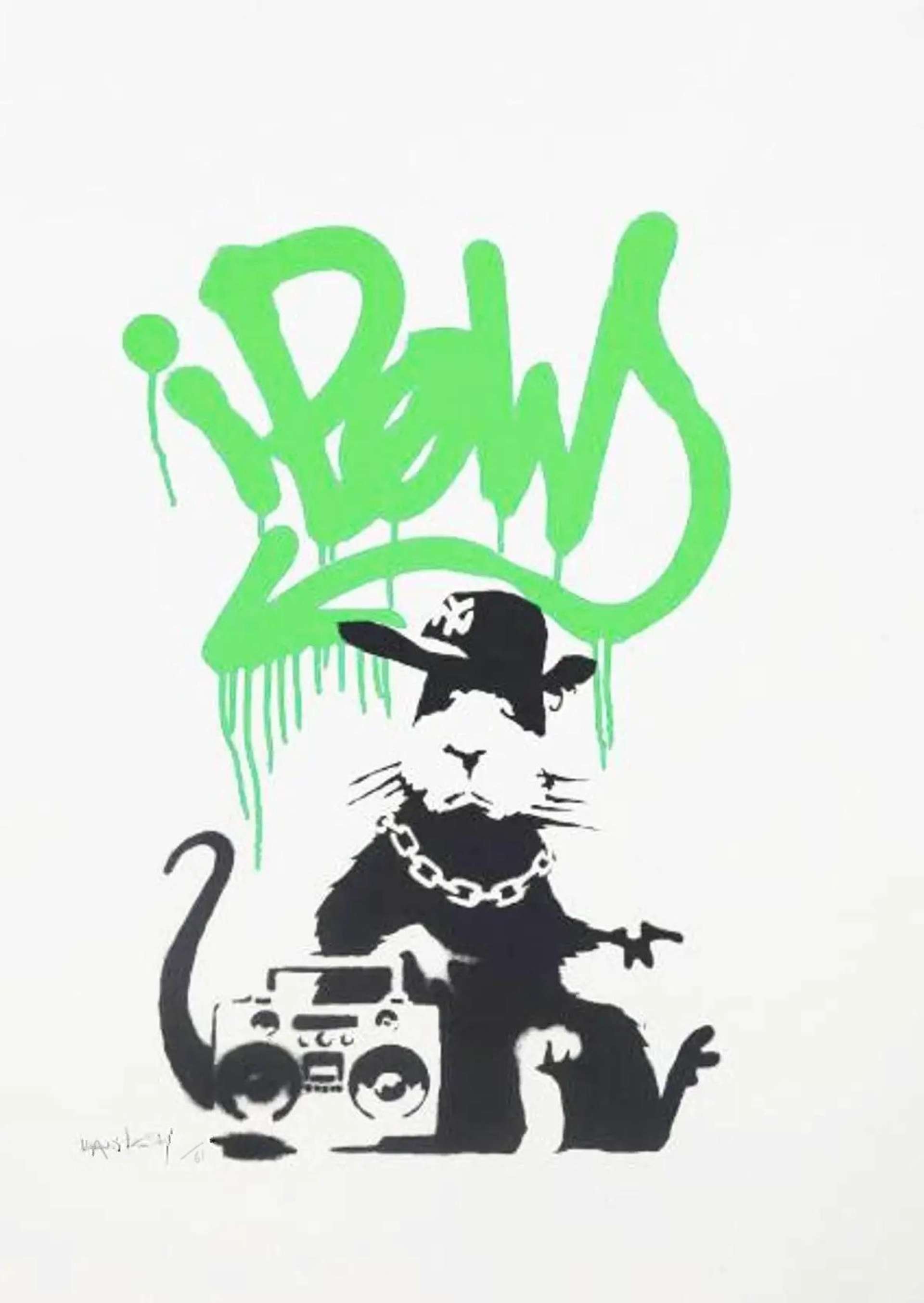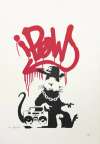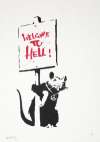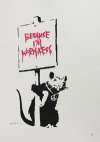Radar
Rat
Radar Rat represents one of the heroes of Banksy's iconography: the rat. The series sees a brazen rodent standing on its hind legs, with a tape recorder and receiver in hands. Banksy's Radar Rat is an insurgent, and encourages the viewer to question the ever-watchful eye of the establishment.
Banksy Radar Rat for sale

£100,000-£150,000
$190,000-$290,000 Value Indicator
$170,000-$260,000 Value Indicator
¥910,000-¥1,370,000 Value Indicator
€120,000-€170,000 Value Indicator
$990,000-$1,480,000 Value Indicator
¥19,070,000-¥28,610,000 Value Indicator
$130,000-$190,000 Value Indicator
TradingFloor
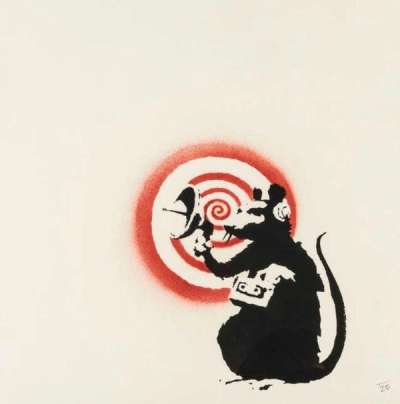
£70,000-£100,000
$140,000-$190,000 Value Indicator
$120,000-$170,000 Value Indicator
¥640,000-¥910,000 Value Indicator
€80,000-€120,000 Value Indicator
$690,000-$990,000 Value Indicator
¥13,350,000-¥19,070,000 Value Indicator
$90,000-$130,000 Value Indicator
TradingFloor
Sell Your Art
with Us
with Us
Join Our Network of Collectors. Buy, Sell and Track Demand
Meaning & Analysis
Banksy's Radar Rat, building on the artist's recurrent rat motif, portrays a rat resting on its hind legs, wearing headphones and clutching a tape recorder. Originally known as ‘Sonic Rat’, the work was first released in 2004 by Banksy’s print publisher Pictures on Walls (POW), at the artist’s Santa’s Ghetto pop-up shop; 2 years earlier, in 2002, Radar Rat had appeared on several walls around London. In 2008, the image appeared on the cover of Dirty Funker’s ‘Future’ album.
Stencilled in signature Banksy style, the Radar Rat appears to be listening intently to the world around him. The work can be read as a comment on the ever-increasing presence of surveillance equipment in major cities, such as London.
The popularity of the rat as a Street Art symbol began with the rise of Blek le Rat - a French stencil artist who initiated the urban art movement in France during the late '70s. Also known as Xavier Prou, Blek - dubbed the ‘Father of stencil graffiti art’ - began to spray-paint small rats on the streets of Paris, and on the banks of the river Seine. This was "because rats are the only wild animals living in cities, and only rats will survive when the human race disappears and dies out. I wanted to do a rat invasion. I put thousands all over Paris".
Two decades later, stencilled rats appeared on the streets of the United Kingdom, quickly becoming prominent motifs in the work of artists like Banksy. In his influential monograph Wall and Piece, Banksy acknowledged his debt to Blek le Rat, stating that "every time I think I've painted something slightly original, I find out that Blek le Rat has done it as well, only 20 years earlier."
[To learn more about Banksy's Rats, see our guide here.]
